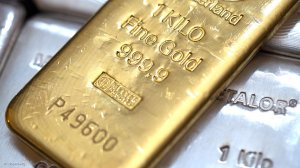TORONTO (miningweekly.com) – Weak industrial demand is holding back silver’s potential price performance against an upbeat gold price, seemingly treading water while gold enjoys renewed interest as a safe haven for investors in the uncertain global economic environment.
Bank of Montreal (BMO) Capital Markets research analyst for commodities Jessica Fung on Thursday – during BMO's Mining Outlook conference call – explained that the silver price typically moved in close relation to the gold price, meaning that when gold moved up, silver should be moving up by twice as much. Because of this, silver was often referred to as ‘poor man’s gold’.
Fung stated, however, that she was seeing demand weakness across all industries for silver, not just in a specific industry, such as photography during the 1990s.
While silver’s uses had multiplied, manufacturers were also managing to reduce their use of the superconductive metal in certain applications, such as solar panels.
“The reason we are not seeing this price performance right now is because silver is being held back by weak industrial demand. This is a trend that we think could potentially continue, so we will not see that gold-silver ratio come down that much,” she said.
Since the start of the year, gold had appreciated by about 18%, jumping by about 10% in February, while silver prices had only improved by about 9% since the start of the year, and by only about 5% in February.
Fung advised that she expected the long-term gold-silver ratio to come down to about 0.60, down from around 0.80, where it was now. “We should see silver outperform at some point, but the industrial demand is just too weak to support silver prices.”
Meanwhile, gold prices were being supported by the global market uncertainty, prompting investors to renew their reliance on the yellow metals as a safe haven for value.
Fung pointed out that the gold price trend was repeating itself early this year, compared with what happened early in 2015.
Gold on Thursday closed at $1 256.80/oz, having earlier in the day touched a one-year high of $1 269.3/oz.
What will probably support gold prices around the $1 200/oz level, but not much above that level, was that there were potential negative interest rates on the cards for Japan, with talks about it in the European Union and possibly in the US too. Depending on how the global economy fared during the year, this might become a more pressing discussion point later in the year, said Fung.
“The next leg up for gold is that we need to price in more uncertainty and risk into what we already know. We know the [US Federal Reserve] is probably not going to raise interest rates this year. That was the reason our 2016 price forecast in December was $1 050/oz – we thought there were going to be three or four rate hikes,” she said.
RISING OPTIMISM
BMO’s Mining Outlook conference call followed the twenty-fifth edition of its Metals and Mining conference, which took place on Wednesday, in Hollywood, Florida.
Attended by about 1 000 chief executives and institutional investors from around the globe, BMO took the opportunity to survey conference attendants.
Fung noted that, as the first major mining event on the yearly calendar, the survey results gave an early indication about market sentiments.
She said that, while analysts were still parsing through the fresh data from about 420 respondents, about two-thirds of respondents believed that higher commodity prices would reinvigorate investor interest in the market segment, while about a quarter said increased cash flows would bring money back to mining, and about 5% said increased mergers and acquisitions activity would spur renewed interest.
“Overall, the conference sentiment was more positive than last year, as people were becoming increasingly comfortable to talk about a recovery in commodity prices. The challenge is what that recovery might look like,” said Fung.
She also highlighted that respondents expected urbanisation in emerging markets, potential Chinese stimulus and US economic strength to drive metal demand in the next 12 to 24 months.
According to Fung, Chinese stimulus measures were likely in the wake of weaker manufacturing data on the purchasing manager’s index figures for March, which could support prices in the medium term.
Edited by: Samantha Herbst
Creamer Media Deputy Editor
EMAIL THIS ARTICLE SAVE THIS ARTICLE
To subscribe email subscriptions@creamermedia.co.za or click here
To advertise email advertising@creamermedia.co.za or click here













